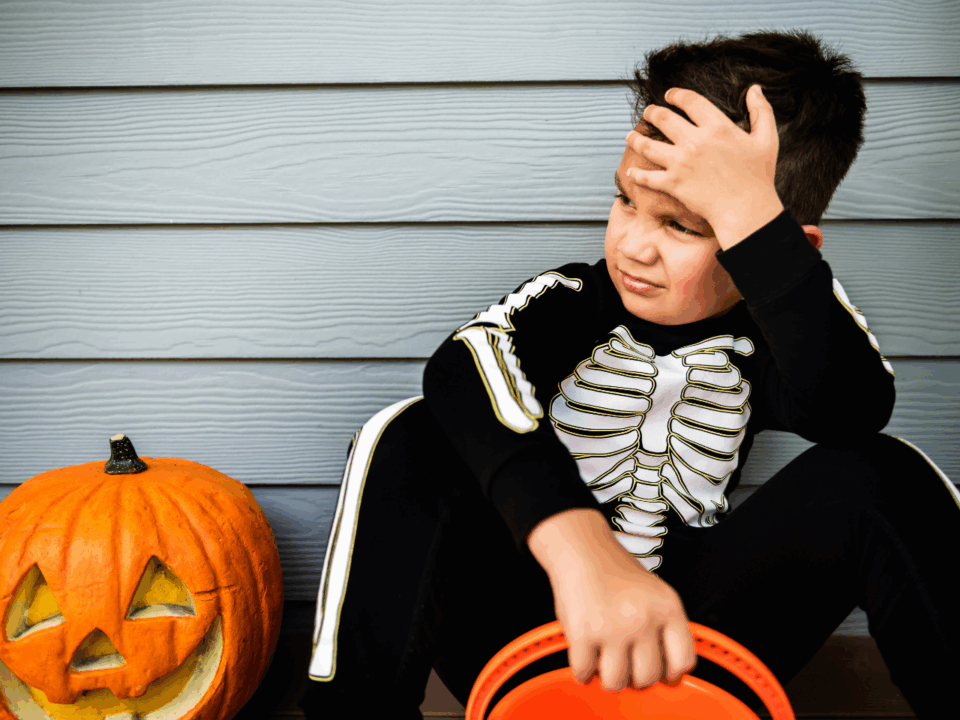For many children, Halloween is an exciting time filled with costumes, candy, and a little spooky fun. But for kids with anxiety, this holiday can feel overwhelming or even scary (and not in a fun way). Loud noises, unfamiliar faces in costume, and unpredictable social interactions can trigger stress and discomfort. As a parent, your support and preparation can make all the difference in helping your child feel safe and included.
Here are practical ways to support anxious kids through Halloween:
1. Start the conversation early
Begin talking about Halloween a few weeks in advance. Ask your child how they feel about the holiday and listen without judgment. Some kids may not be able to name exactly what’s bothering them, so help them identify specific fears, whether it’s the dark, scary decorations, crowds, or knocking on strangers’ doors. Validating their feelings is the first step. Let them know it’s okay to be nervous, and reassure them that you’ll work together to make a plan that feels good.
2. Create a plan
Not every child wants to trick-or-treat for hours in the neighborhood, and that’s okay. The goal is to participate in a way that matches your child’s comfort level. Consider alternatives like:
– Visiting a quieter part of town or attending a sensory-friendly event
– Trick-or-treating during daylight hours
– Hosting a small costume party with familiar friends
– Enjoying Halloween-themed crafts, movies, or baking at home
3. Choose the right costume
Some kids find masks, face paint, or bulky costumes uncomfortable or stressful. Let your child take the lead in choosing a costume that feels good to them. Sometimes just wearing a favorite hoodie with ears or a superhero T-shirt is enough to help them feel festive without the pressure of a full costume.
4. Practice makes comfort
For anxious kids, new situations often feel more manageable with some practice. Do a “Halloween rehearsal” at home: dress up, practice knocking on doors, and role-play handing out candy or saying “trick or treat.” Familiarity reduces fear. If you’re attending a new event or visiting an unfamiliar place, show them photos or videos ahead of time so they know what to expect.
5. Be a calm and supportive presence
During Halloween festivities, keep an eye on your child’s body language. If they seem overwhelmed, offer a break or head home early without making it feel like a failure. Let them know that you’re proud of them for participating, whether they visited one house or ten. Celebrate small wins, and never force participation if they’re truly uncomfortable.
6. Have an exit strategy
Sometimes things don’t go as planned. Prepare a quiet place your child can retreat to if they need a break. If you’re out, bring headphones, a comfort item, or a familiar snack.
Let them know in advance that it’s okay to leave early, and that their well-being matters more than completing the whole event.
Halloween doesn’t have to be stressful for anxious kids. With flexibility, empathy, and preparation, you can help create a version of the holiday that feels safe, fun, and inclusive, no matter how spooky the season gets.





